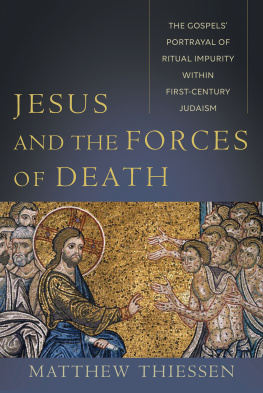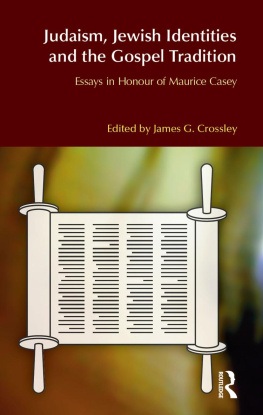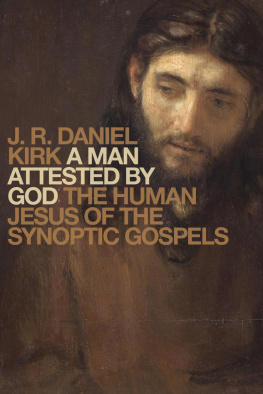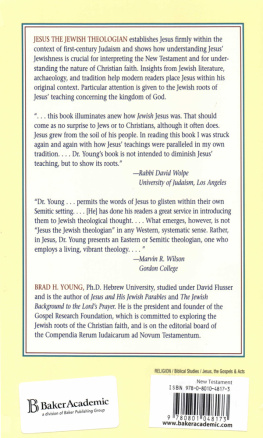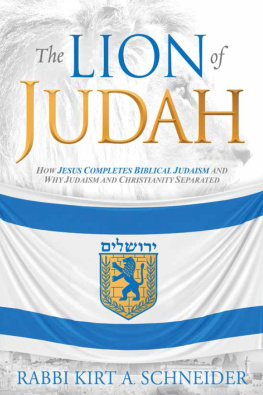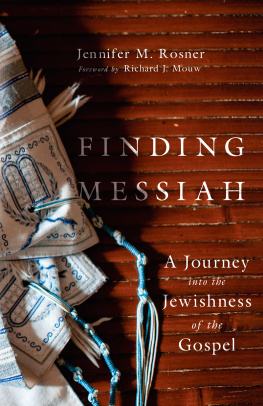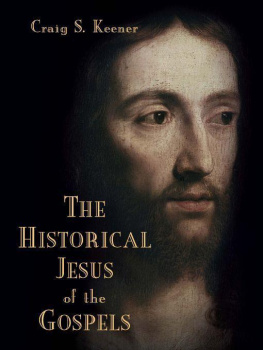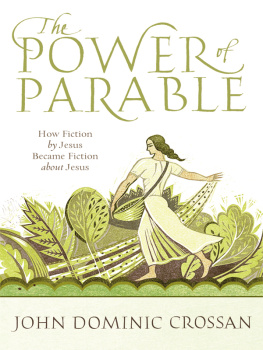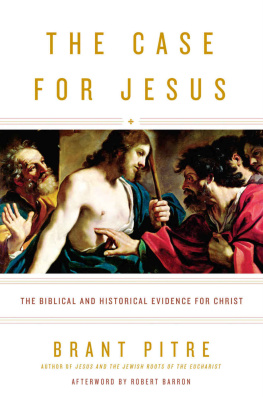Copyright Page
2020 by Matthew Thiessen
Published by Baker Academic
a division of Baker Publishing Group
PO Box 6287, Grand Rapids, MI 49516-6287
www.bakeracademic.com
Ebook edition created 2020
Ebook corrections 01.07.2021
All rights reserved. No part of this publication may be reproduced, stored in a retrieval system, or transmitted in any form or by any meansfor example, electronic, photocopy, recordingwithout the prior written permission of the publisher. The only exception is brief quotations in printed reviews.
Library of Congress Cataloging-in-Publication Data is on file at the Library of Congress, Washington, DC.
ISBN 978-1-4934-2385-9
Unless otherwise indicated, Scripture translations are the authors own.
Scripture quotations labeled NRSV are from the New Revised Standard Version of the Bible, copyright 1989 National Council of the Churches of Christ in the United States of America. Used by permission. All rights reserved.
Unless otherwise indicated, translations of classic sources are from the Loeb Classical Library.
Unless otherwise indicated, translations of the Dead Sea Scrolls are the authors own.
Unless otherwise indicated, translations of the midrash are from H. Freedman and Maurice Simon, eds., Midrash Rabbah , 10 vols. (London: Soncino, 1939).
Unless otherwise indicated, translations of pseudepigraphic texts are from James Charlesworth, ed., Old Testament Pseudepigrapha , 2 vols. (New York: Doubleday, 198385).
Unless otherwise indicated, translations of the Talmud are from Isidore Epstein, ed., The Babylonian Talmud: Translated into English with Notes, Glossary and Indices , 18 vols. (London: Soncino, 193552).
Dedication
With Love,
For Peter and Agnes Thiessen
Contents
Cover
Half Title Page
Title Page
Copyright Page
Dedication
Preface
A Clarification
Introduction
1. Mapping Jesuss World
2. Jesus in a World of Ritual Impurity
3. Jesus and the Walking Dead
4. Jesus and the Dead Womb
5. Jesus and the Dead
6. Jesus and Demonic Impurity
7. Jesus, Healing, and the Sabbath Life
Conclusion
Appendix: Jesus and the Dietary Laws
Bibliography
Author Index
Scripture and Ancient Writings Index
Subject Index
Cover Flaps
Back Cover
Preface
B ack when I should have been writing my doctoral dissertation on circumcision, I became obsessed with ritual purity systems. Apart from the inevitable compulsion of a doctoral student to do anything but write ones dissertation, I blame Jacob Milgrom. Milgroms extensive writings on the topics of Leviticus, sacrifice, and Jewish ritual purity threatened to derail any progress I made toward completing my degree. In the course of reading everything of his that I could get my hands on, I suddenly realized that much of what he and others had discovered in priestly literature provided me with a new lens through which to read the Gospel accounts of the life of Jesus. I knew then that I would write this book.
Fortunately, my responsible self returned, and I refocused enough to finish my dissertation. Unfortunately for this book, I was convinced that my dissertation required me to write another book before I could turn my attention to the topic of ritual purity. Consequently, what you hold in your hands is a book that I would have liked to have written ten years ago but am nevertheless happy to finally get off my mind and onto paper.
Given the long time between conceiving the idea for this book and actually getting around to writing it, many of my debts to others are long forgotten, erased not, I hope, by ingratitude but by a faulty memory. Nonetheless, I am thankful to mentors, colleagues, and students at Duke University, the College of Emmanuel and St. Chad, Saint Louis University, and McMaster University for many stimulating conversations about various aspects of this book. Thanks especially to Paula Fredriksen and Cecilia Wassen for input at a critical juncture in the writing of this project. Defective as my memory may be, I cannot fail to remember my family: my partner, Jennifer, and my two children, Solomon and Maggie. They bring me such richness and joy by lovingly refusing to let me work as much as I erroneously think I would like to work.
Finally, I am immeasurably grateful to my parents, Peter and Agnes Thiessen. I simply cannot remember a day in my childhood when my parents did not work diligently to instill in me the belief that one could find life in the texts that are the focus of this book. For this reason, I dedicate this book to them.
A Clarification
T his book is not about the historical Jesus. That is to say, I am not here seeking to sift through the historical evidence in order to discover what Jesus really said and what Jesus really did. I am not trying to get behind the Gospels to uncover the real Jesuseither to prove that the Gospels accurately portray him or to demonstrate that they have re-created him for purposes of their own. My objective is not to weigh the literary evidence in order to discover data of historical value in order to write an account of the historical Jesus.
For such a treatment, one must begin with John P. Meiers 3,500-page A Marginal Jew . Nonetheless, I harbor two reservations about any such project. First, the only way back to the historical Jesus is through literary sources: the four Gospels of what we call the New Testament, the works of Josephus, and the Gospels that did not make it into the New Testament. The question of historicity can be asked (and at best, partially answered) only after one has determined more accurately what the Gospel writers actually say about Jesus. Yet our efforts to interpret these texts are themselves contested. Read two or three commentaries on Mark or Matthew, and you will frequently find two or three competing interpretations of a passage. If we cant agree on the literary evidence we do have, I think it unlikely that we could ever come to a consensus about something we can never have: unmediated access to the historical Jesus.
What does it say about the historical Jesus that some of the earliest stories about him repeatedly place him in contact with people who have abnormal conditions that make them ritually impure?
When it comes to the question of Jesus and the Jewish law, particularly aspects of it such as ritual purity, commentators through the centuries have almost universally misconstrued the Gospel writers portrayals.
. On the question of the historical Jesuss views on ritual impurity, see Kazen, Jesus and Purity Halakhah ; Kazen, Scripture, Interpretation, or Authority ; Wassen, Jesus Table Fellowship; Wassen, Use of the Dead Sea Scrolls; Wassen, Jewishness of Jesus and Ritual Purity; and Wassen, Jesus Work as a Healer.
. Here see Allison, Constructing Jesus ; Rodrguez, Structuring Early Christian Memory ; Keith and Le Donne, Jesus, Criteria, and the Demise of Authenticity ; and Bernier, Quest for the Historical Jesus .
. For example, Lambrecht, Jesus and the Law; Crossan, The Historical Jesus ; Borg, Conflict, Holiness, and Politics ; N. T. Wright, Jesus and the Victory of God ; and Dunn, Jesus and Purity.
. Even here, I think most scholarship understands Paul wrongly. See my own account of this in Paul and the Gentile Problem .
. Fredriksen, What You See Is What You Get, 89.
Introduction
I n a 2018 sermon, American megachurch pastor Andy Stanley stirred up controversy when he suggested that leaders in the early Jesus movement sought to unhitch the Christian faith from their Jewish scriptures. He then asserted to his congregation that we must as well. Again, theologians have responded with charges that Slenczka is guilty of both heresy and anti-Jewish thinking.

